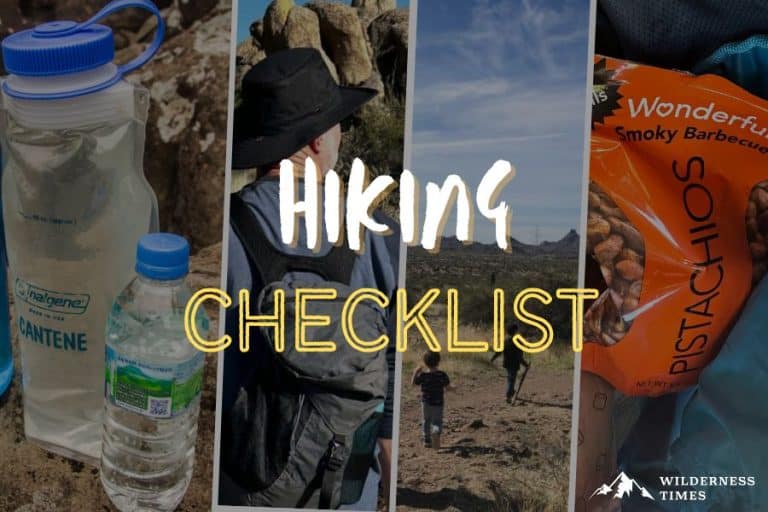Having a good hiking checklist can help ensure you enjoy your hiking adventure.
Not bringing everything you need can result in having a bad time, which could end with you hating hiking.
But all this can be prevented by bringing the right gear.
Sometimes, remembering everything to bring is a lot.
You can definitely take too much gear with you, but you can also take too little with you if you’re not careful.
Don’t worry! We’ve created this hiking checklist to help you be sure you’re bringing all the gear you’ll need to have a great time.
While we’re at it, we’ll cover the best practices associated with hiking, so you can focus on nature and enjoy your trip.
Table of Contents
ToggleHiking Checklist
Hiking is one of the easiest types of outdoor recreation.
Here are some basic pieces of gear you should consider taking for a hiking trip, including some not-so-necessary-but-could-come-in-handy pieces:
Essential Gear
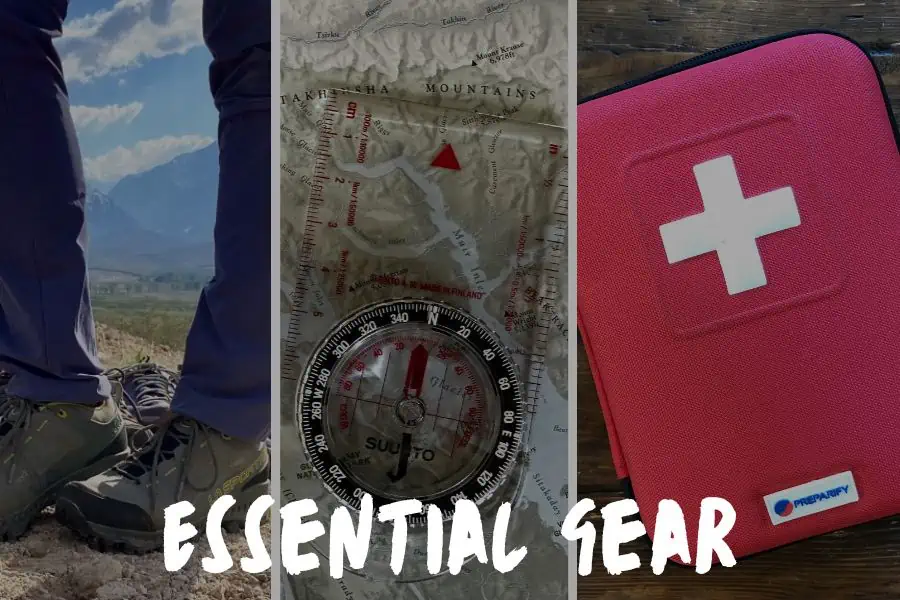
- Hiking Footwear (Boots, Traction Chains, etc.)
- Weather Appropriate Clothing Layers (Light Jacket, Shorts, etc.)
- Hiking Backpack
- Navigation Tools (Map, Compass, GPS, etc.)
- First Aid Kit
- Hydration System
- Plenty of Hiking Snacks/Meals
- Emergency Supplies (Emergency Blanket, Headlamp, etc.)
- Fire Tools (Matches, Lighter, Tinder, etc.)
Recommended Personal Items

- Sun Protection
- Insect Repellent
- Personal Medications
- Multi-tool or Knife
- Personal Identification
- Emergency Contact Information
- Toilet Paper & Waste Bags
Optional Gear & Accessories
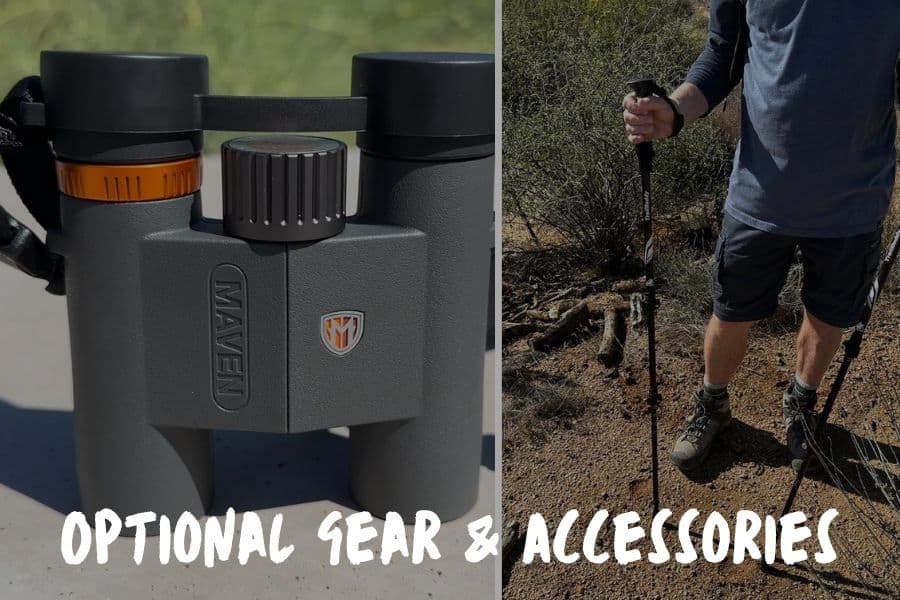
- Trekking Poles
- Gaiters
- Binoculars
- Camera or Smartphone
- Portable Charger
- Charger Cords
Additional Considerations
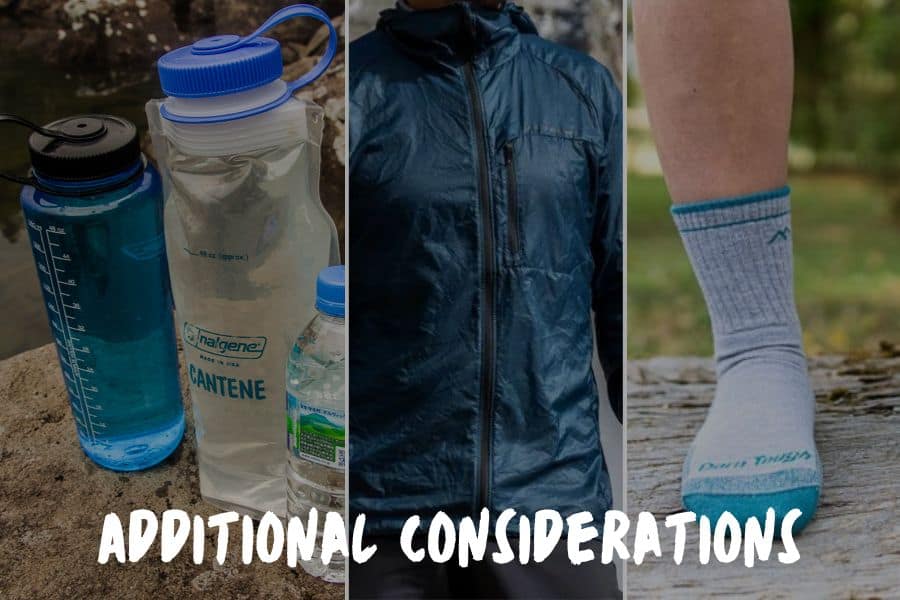
- Rain Gear (Jacket, Pants, Mittens, Umbrella, etc.)
- Warm Socks
- Extra Water & Snacks
Hiking Safety Checklist
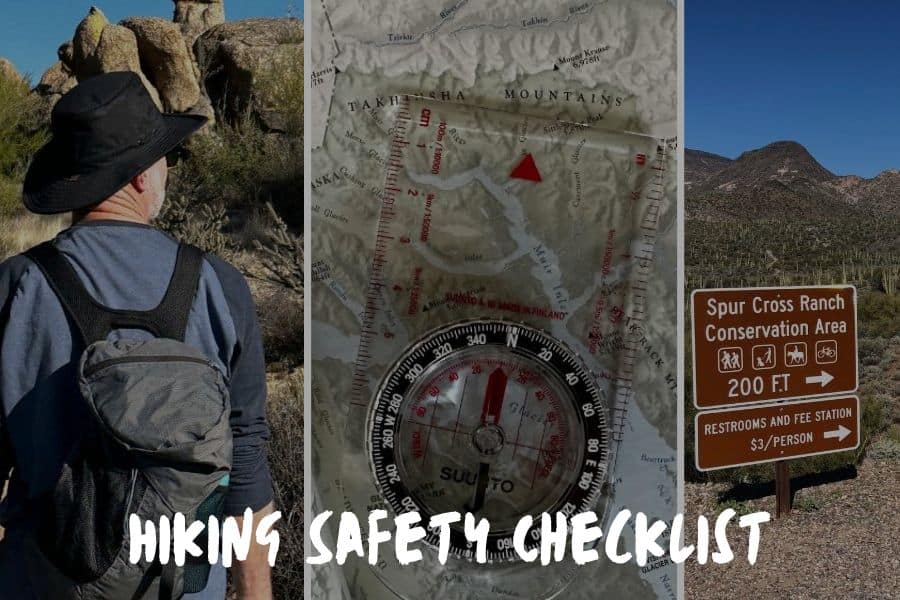
- Have a trail map.
- Let others know your plans.
- Hike with a buddy or group.
- Research your trail.
- Learn common trail markings/warnings.
- Follow proper hiking etiquette (Leave No Trace).
Preparing For The Hike
Before you go on a hike, you should always research the trail.
Look at trail guides, official websites, and reviews on All Trails.
Read: Best Hiking Apps
Look for what trail conditions to expect, like downed trees or severe river/stream crossings.
Ensure you look at the trail difficulty rating and determine if the trail is suitable for your capability.
You should also check the weather forecast before you go hiking.
You don’t want to risk getting unexpectedly caught in bad weather.
The weather forecast will also help you decide what to wear and if you need to bring any extra layers or rain gear.
Read: Tips for Hiking in Rain
If your trail has any creek crossing, you should check to see how deep the rivers and creeks are along your trail.
You can also figure how long the hike will take you based on how long it is, which you can determine the time by looking at your previous hiking times.
You could also read reviews that list how long it took others to complete their hike on the trail.
Generally, 3 miles will take the average person around 1 hour to complete, but trail elevation gain can easily double that time.
That is why it is so important you research your trail to know exactly what conditions to expect and how those affect the length and quality of your hike.
One of the easiest ways to determine hike timing is to use Naismith’s Rule.
This essentially means you should assume 1 hour for every 3 miles walked, plus an additional hour for every 2,000 feet of elevation gained.
| Imperial | Metric |
| 1 hour for every 3 miles + 1 hour for every 2,000 feet of ascent | 1 hour for every 5 kilometers + 1 hour for every 600 meters of ascent |
Before you go on any hike, you need to ensure that you have the physical and mental ability to actually complete it.
The same goes for anyone who is planning to hike with you.
If you or another person has any medical conditions, ask your medical provider whether it’s safe to do so.
Don’t try to hike a harder trail than you’re used to.
You should gradually attempt harder trails as you build up your hiking strength and fitness.
So, if you’re new to hiking, don’t try to hike the hardest trail in your area.
Remember that ticks and mosquitoes may be in your hiking area, too.
These pests not only bite, but they can also spread deadly diseases.
You don’t have to let that fear prevent you from going hiking, though. Instead, you simply need to take preventive measures.
Pre-treat your clothing, gear, and boots with Permethrin to help stop ticks.
Wear bug spray with Picaridin and DEET. Lemongrass is a good alternative to chemical-based bug-repellent products.
You can also wear a head net if the bugs are really bad.
Leave No Trace Principles
While hiking, it’s important to leave the trail better than you found it.
This helps to protect and preserve nature, as well as the overall environment of the earth.
Plus, if you follow these seven principles, you’ll be leaving nature a better place for the next hiker.
- Plan ahead and prepare. Not only for your own safety and enjoyment but also to minimize your impact or damage on the land around you.
- Travel and camp on durable surfaces. Only hike in areas that are made for hiking and campsites that are intended for camping. Basically, minimize your footprint by disturbing as little of nature as possible.
- Dispose of waste properly. If you pack it in, you should always pack it out. Don’t leave trash behind. Put used toilet paper in a Ziploc bag and take it with you. Leaving it behind can create hazards for the wildlife living along the trail you’re just visiting.
- Leave what you find. Only take memories with you, and don’t forage in areas where it’s not allowed. Don’t move plant life or rocks. When you’re in nature, move yourself, not nature.
- Minimize campfire impacts. Make sure the campfire is cold to touch before you leave it. Also, only use an actual campfire when you must to minimize burn damage and firewood usage. If possible, use a camping stove instead.
- Respect wildlife. You’re in their home. They live in the woods, and you’re just visiting. Act like a guest in their home by respecting their home.
Be considerate of others. This can mean many different things. For starters, share the trail and always yield to - Equestrians first. And simply, respect your fellow hikers by sharing space.
Wildlife Awareness

Be aware of the wildlife in your area. You should also take note of the hibernation seasons of any predator wildlife or hazardous wildlife, such as venomous snakes.
Does your area have bears, cougars, wolves, or moose? These large animals could become problematic for humans in some cases.
It’s important to carry defense spray and a bell to inform animals of your presence if the area has a history of such interactions.
If you encounter a wild animal, give them plenty of room to escape while moving away from them.
Only use a defensive measure if you feel you are about to be attacked.
Read: Does Bear Spray Work on Mountain Lions?
Hiking With Kids
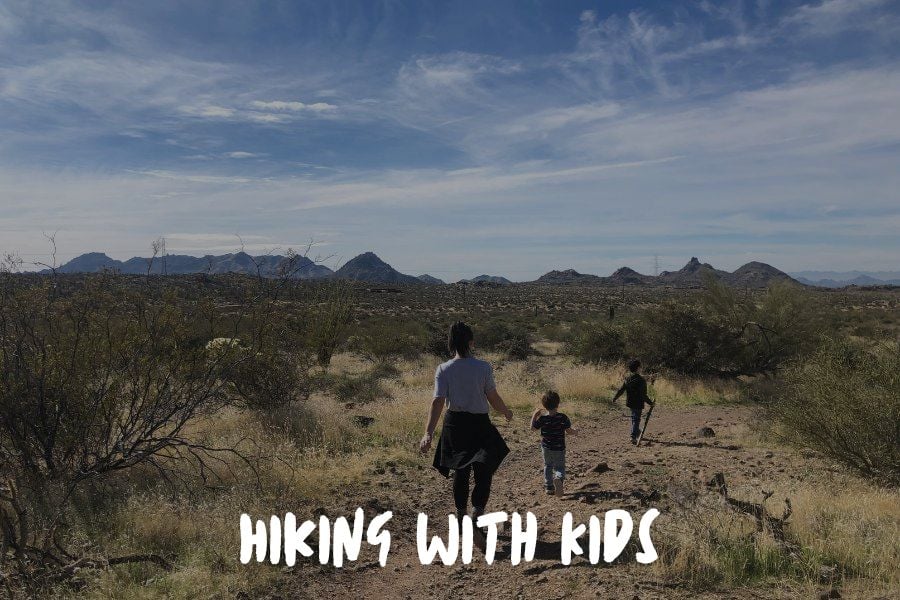
It’s important to bring extra gear if you’ll be hiking with kids.
You’ll need to carry the bulk of the weight and heaviest items for the most part.
But you can also have the child carry some of their own things in their backpack to start training them for their own future hiking adventures.
Children often use more energy than we adults do, so make sure you keep them fueled and hydrated properly.
You might want to include the following gear when taking children for a hike:
- Additional Water
- Kid-friendly Snacks
- Kids Hiking Backpack (if they want one)
- Kids Binoculars
- Kid-friendly Sunscreen
Hiking With Your Dog/Pet
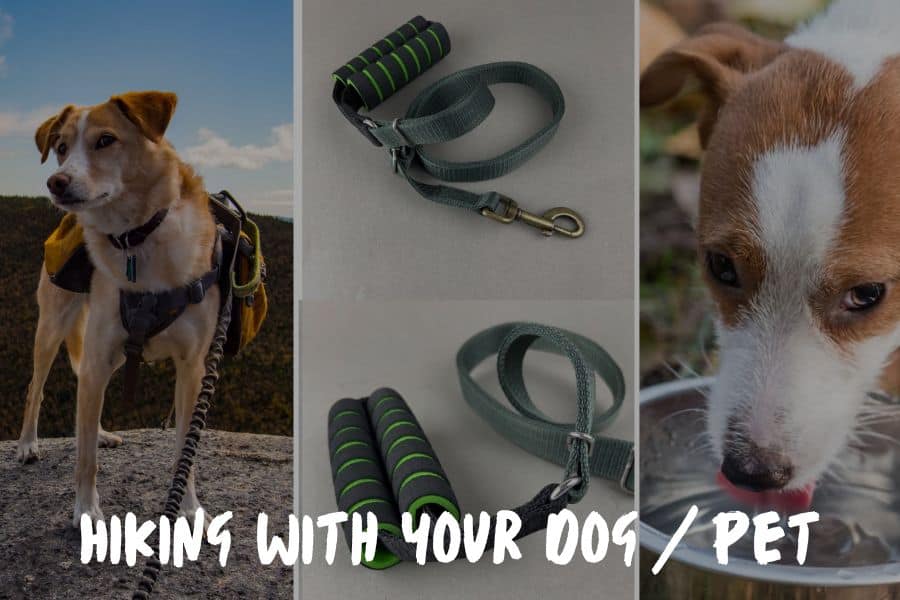
Like with children, it’s also important to pack extra gear for your dog if you want to take them hiking with you.
Many dogs can carry special-designed backpacks made for dogs – or you can even carry your dog with a dog backpack!
Many pet owners will have the dog carry its own food, water, and bowls if it can.
A bigger dog can oftentimes carry its own gear, while you may have to carry most of the gear for a smaller dog that doesn’t have as much strength and muscle mass.
Just remember to keep your furry buddy hydrated, as they typically burn a lot of energy during a hike.
Include the following gear when taking your pet for a hike:
- Leash
- Collar/Harness
- Food & Collapsible Bowl
- Extra Water
- Treats
FAQs
Do I Really Need Specialized Hiking Shoes, Or Can I Just Wear Regular Sneakers?
Hiking footwear is best because it’s made for outdoor conditions and rugged terrain.
There are many different options for hiking footwear, though.
You can wear hiking boots, shoes, or even trail running shoes – which are a lot like tennis shoes.
Regular non-hiking footwear, Crocs, and flip-flops should be avoided. Using them could result in injury.
What Should I Do If I Encounter A Wild Animal On The Trail?
Don’t turn your back on the animal. Slowly back away safely and give it plenty of room. Let it escape your path if it wants to.
You can also make yourself look bigger by holding your backpack above your head.
Never try to harass or handle wildlife of any kind, as that is when most attacks occur.
Is Drinking Water From Natural Sources Like Rivers Or Streams Safe While Hiking?
To be safe, you should always filter water from natural areas.
Use a filtering device or tablets to ensure that the water is purified and safe to drink.
Most water is typically contaminated in some form or another from human and livestock waste.
Are There Any Alternative Options For Carrying A Heavy Backpack?
You can practice ultralight hiking. This is where you carry lightweight and minimal gear.
In this type of hiking, you only carry the bare necessities.
I typically carry a hydration backpack when I go for an ultralight hike, and I only pack what is necessary, such as water, snacks, a flashlight, a map, a compass, and a first aid kit.
How Can I Prevent Blisters & Foot Pain During Long Hikes?
Always break in new footwear before using them on a long hike.
New shoes or boots will likely give you blisters if they’re not broken in.
Try to keep your feet dry to prevent blisters. Get boots that fit above the ankle to prevent sprains and twists.
You can also carry Moleskin with you to put over developing blisters to keep your feet from hurting during the progress of your hike.
Are There Any Specific Hiking Etiquette Guidelines I Should Be Aware Of?
Of course! Here are some of the main things:
- You should always share the trail with other users. Hikers and mountain bikers should yield to equestrians first.
- Don’t play loud music because others may not want to hear it.
- Keep your pet on a leash and only hike on trails that allow pets to be on the trail.
- Follow all trail and area limits and closure guidelines.
- Lastly, always leave the trail better than you found it.
What Should I Do If I Get Lost While Hiking?
Try to stay calm. When you’re calm, you can think more rationally about things. Try to remember various things you passed by while hiking to see if you can backtrack.
Use your compass and point it in the direction of where you parked your vehicle (you should record that direction before every hike).
Use a whistle or activate your Personal Locator Beacon if you cannot find the trail.
Most importantly, always tell someone where you’re going and how long you’ll be hiking, so they know where and when to send help if you don’t return.
How Can I Protect Myself From Ticks & Other Outdoor Pests While Hiking?
Pre-treat clothing, footwear, and gear with Permethrin. You can even use it on synthetic clothing such as spandex and polyester garments.
Use DEET-based repellents on your skin, never Permethrin.
Alternatively, you can use Lemongrass instead of DEET, although it may not be as effective as a chemical repellent.
You can also wear long sleeve shirts and pants and a head net to protect yourself from biting insects.
To Sum Things Up
Following best practices and having a good hiking checklist will help you enjoy your hiking adventure to the fullest.
If you take the advice above, you’ll have no problem enjoying every aspect of your hike by being well-prepared!
More Hiking Tips


